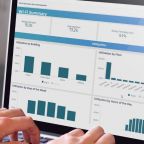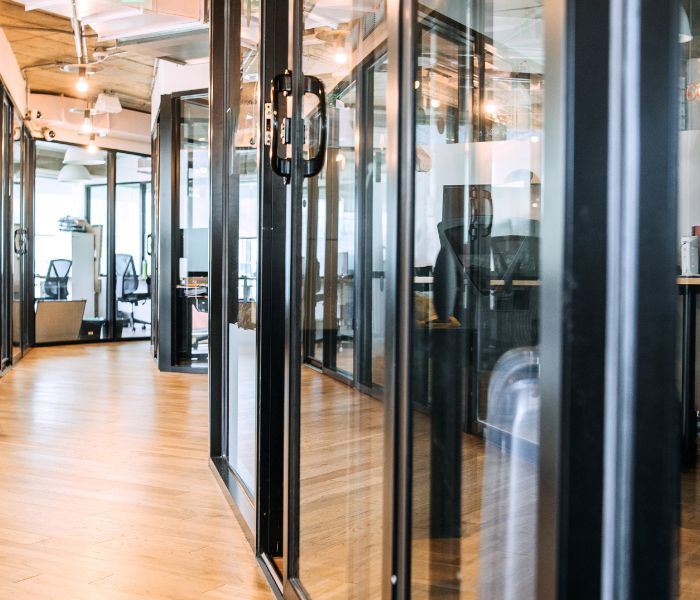The nature of work and workplaces has traditionally been designed to fit the needs of the organization. The hybrid workplace model required a shift of priorities. To be successful, a hybrid workplace strategy must be focused on the needs of individual staff members.
Supporting the way people work best leads to greater productivity and more effective performance.
When work went hybrid due to necessity, many workers embraced the freedom to fit work into their life, rather than adjusting their lifestyle to suit workplace requirements.
Staff members who work well under the flexible conditions of a hybrid workplace are understandably reluctant to return to the office and a 9 to 5 schedule, capped at each end with a long, time-wasting commute.
Hybrid workplaces aren’t going away, for various reasons. Many businesses are benefitting from these arrangements. The ability to maintain less square footage for business headquarters, and to utilize property on a temporary rental basis instead, provides unexpected cost savings.
But some struggle with certain aspects of the effective implementation of hybrid work. Establishing a vision and forming a step-by-step plan support an effective outcome for any project. Here are 6 steps that can help you make your hybrid workplace strategy a success.
1. Determine Your Version of a Hybrid Workplace
Each organization must define how its hybrid workplace needs to be set up. Each person needs to know what is expected of their role. Will they come into the office one day or three? How and where will meetings be held? Will they all be virtual, or will some be held in person?
Does everyone understand how to use the tools you’ve chosen to help team members stay connected with each other? Knowing what’s expected and how it will be achieved is the first step in ensuring the success of your hybrid workplace.
2. Connect Employees with the Right Technology
Finding ways to keep your team cohesive, happy, engaged, and working like a well-oiled machine, can be a challenge when setting up a hybrid workplace. – A work setting that’s not just a room, a building, or a network of offices in various cities, but a web of people working together from varied, often temporary, places.
Thankfully, today, many digital tools are available which can improve the quality of communication in hybrid workplaces. It’s important to find the tools that work best for your team. When working remotely, people must have the means to connect with one another effectively, to strengthen the bonds that make them feel truly a part of your organization.
A feeling of belonging to the organization for which one works can lead to a 56% increase in job performance and a 50% reduction in turnover risk. It translates not only to improved employee morale. A better experience for workers supports organizational success and profits.
Additionally, a technology-based system is available for locating property that’s available for utilization as a temporary workspace for one-person use or for collaborative meetings.
3. Continuously Review and Improve Your Hybrid Workplace
Hybrid workplaces have become the norm. Maybe it seems once it’s set up and running you don’t have to do much to your hybrid workplace system. But that’s not the case. As with everything, there’s always room for improvement. Conditions are always changing, and new concerns arising.
Onboarding a workplace experience leader at your company, someone to make certain your staff remains engaged and happy, your workplace tools appropriate for their needs and working smoothly, is an investment in continuing success.
Workplace experience leaders and teams stay in touch with staff members and note their evolving needs. They find ways to support connection and collaboration between those working toward specific goals from a wide variety of physical spaces. Staying connected is best accomplished via a combination of periodic opportunities to meet in person, plus the adoption of and proficiency with the latest tech tools for virtual meetings.
4. Measure Engagement – It’s More Important Than Output
Focusing on “hard” metrics, like work output or hours spent in-office, as measures of success are no longer appropriate. The rise of the hybrid workplace has caused “soft” factors like:
- Community.
- Connection.
- Belonging.
. . . to take precedence. Improvement in soft metrics translates to an organic rise in the levels of hard metrics. When employees are happy, the quality of their performance naturally increases.
How do you measure soft metrics like employee happiness as it applies to a hybrid work environment? Employee engagement seems an appropriate metric. Measure it via such tactics as:
- Employee surveys.
- HR tools.
- Social media posts.
- Exit interviews.
Engagement results in a positive approach to job tasks. Consistent attention and increased focus results in an increased level of productivity.
Employee engagement has always presented a challenge. Even more so as haphazard hybrid workplaces were quickly put in place. But just as technology facilitates remote, solitary physical working conditions, when properly implemented, today’s tech tools can also help bring remote workers a sense of connection.
5. Remember That Workplaces Should Support Workforces – not Vice-Versa
Buildings and offices don’t generate profits. But people can work from nearly any location. Staff members happy with their working conditions are even more productive. The best way to find out what your hybrid workforce needs and wants is to gather the opinions of staff members,
The other priority is to help every member of your hybrid workforce connect effectively with the entire network to work better together and maintain a sense of community. Software that supports group meetings and socialization aid those essential goals.
In like manner, our workplace management services, including hybrid workplace scheduling software support ease of finding and arranging the right temporary or permanent workspace for every person, purpose, and place.
6. Find the Right Workspace for Your Hybrid Work Requirements
Working from anywhere is here to stay. Technology supports it in every way.
Hybrid work doesn’t always mean working from home. It means working from any place. Whether that translates as a private office in a building in your hometown, a hotel guest room, or a conference room, FM:Systems empowers people to choose the right workspace for the work they need to do today.
Users can quickly craft the ideal workday in an easy-to-use platform that connects workspaces, conference rooms, co-workers, amenities, and guests. Our system provides a seamless scheduling experience.
Contact us for more information or go ahead and schedule a demo. Our workspace scheduling software can help support your hybrid workplace strategy success.











